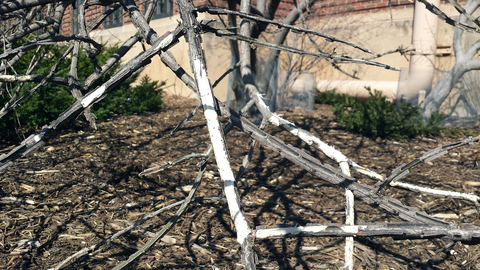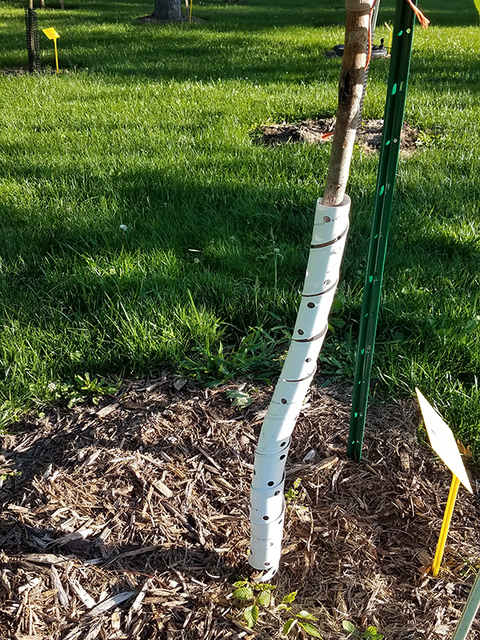Winter protection for plants
UNIVERSITY OF MINNESOTA EXTENSION - www.extension.umn.edu
Rabbits browsing can kill branches by chewing through the cambium layer in bark resulting in girdling.
We’ve been encouraging Minnesota gardeners to get ready for winter by watering plants up until freeze, using fallen leaves as mulch on your garden, and avoiding pruning after September to reduce the chance of vulnerable new growth developing late in the season. Animal browsing and abiotic damage can also lead to plant stress. Below are more ways to ensure your plants are protected this winter and emerge healthy in spring.
Details, images and videos can be found in Trees and shrubs: Planting, protection and care.
Protect plants from animal browsing
Trees and shrubs — especially those with thin bark — are especially attractive to rabbits, voles and deer looking for food in winter. Create enclosures around the trunks of trees and around entire shrubs using 4-foot tall hardware cloth fencing. Bury the bottom of the fencing (while you still can) a few inches into the soil to reduce the chance of small animals crawling under the fencing.
Cap terminal buds on 1- to 5-foot tall conifers like white pine prevent deer from topping your trees. Loss of terminal buds can result in stunted, bushy growth. Simple caps can be made by folding a 4x6-inch sheet of plain paper and stapling the edge together, catching some needles with the staples.
Watch this bud capping demonstration video.
Protect against trunk damage
Tree guards reflect winter sunlight that can cause bark to warm up and stimulate cellular activity.
In combination with fencing, install white tree guards around trunks to prevent sun scald and ultimate frost cracks of young, thin-barked trees. The white guard reflects light rather than absorbing it and prevents intense winter sun from warming plant cells. These guards will also protect trees from deer browsing and rubbing on the bark.
Protect tender roses against winter kill
While we have many hardy shrub roses that can survive winter, some protection can result in less winter kill — branches that turn brown — and more live tissue to start with in spring.
Install a circle of fencing around your shrub and pile in fallen leaves. The leaves insulate and protect rose stems while the fencing protects from animal browsing (and holding leaves in place).
To wrap or not to wrap?
Wrapping evergreens against browning caused by salt and wind is an arduous seasonal task and leaves you with a group of trees or shrubs that look like they belong in a sci-fi movie. Evergreens continue to photosynthesize through the winter, and covering them completely can prevent this. Browning on evergreens can be caused by dry winter winds, droughty soils and salt spray from road maintenance. Fortunately, Minnesota is using less chloride (salt) for winter road maintenance.
Avoid the need to wrap evergreens by watering plants up until the soil freezes so they go into dormancy well-irrigated, and do not plant salt-sensitive plants within 8 to 10 feet of a road treated with chemicals. If you have trees and shrubs already planted close to the road, a burlap barrier or fence may provide protection.
Read more about The effects of de-icing salts on landscapes.


